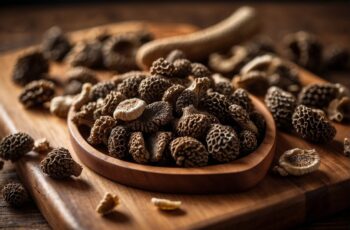Morel mushrooms are among the most coveted seasonal fungi, prized by chefs and foragers alike for their earthy flavor and unique honeycomb appearance. As a seasonal delight, they command a notable price in the marketplace. The cost of morel mushrooms per pound can vary notably, depending on a multitude of factors, including the species, quality, and availability. Morels are typically foraged rather than farmed due to their complex growth requirements, adding to their exclusivity and the labor-intensive efforts required to find them in the wild.
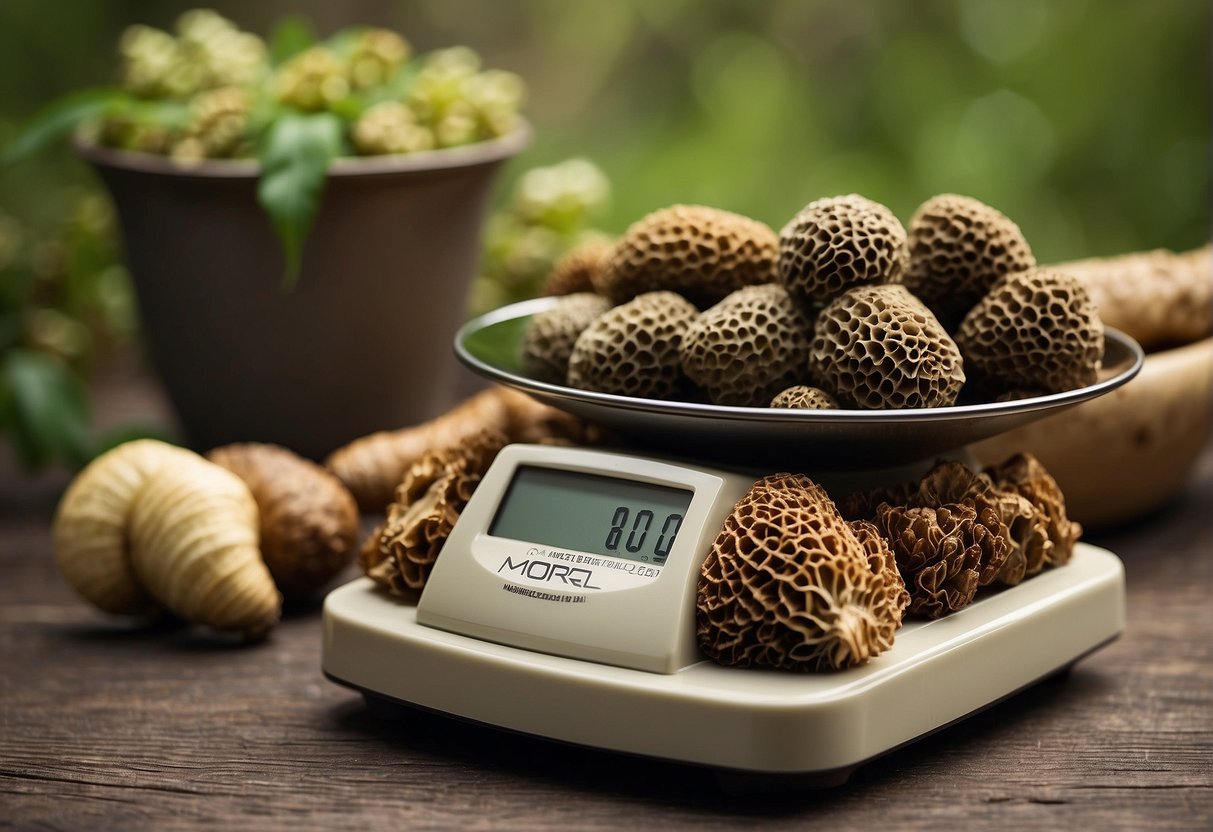
Understanding the price of morels is essential for both the enthusiast looking to indulge in cooking with these flavorful fungi and the forager looking to sell their find. The price per pound reflects the effort necessary to harvest these elusive mushrooms and the demand in the culinary world. With their seasonality being limited to spring and early summer, morels become a time-sensitive delicacy, often driving prices higher as the season progresses. For those passionate about the outdoors and the nuanced art of morel foraging, knowing the market trends and cost implications could be as rewarding as the hunt itself.
Key Takeaways
- Morel mushrooms are a seasonal, sought-after commodity in the culinary world.
- The cost per pound of morels is influenced by factors such as variety, availability, and seasonal timing.
- Understanding market trends and the value of these unique mushrooms can enhance both the foraging and culinary experience.
Morel Mushroom Varieties and Characteristics
When you venture into the woods in search of morel mushrooms, you’re embarking on a quest for one of nature’s most delectable treats. Each species is distinguished by its unique flavor and texture, setting morels apart as a prized find for any mushroom hunter.
Species and Appearance
Morels belong to the genus Morchella, and their distinctive honeycomb-like appearance makes them easily recognizable. They come mainly in three varieties: black morels (Morchella elata), yellow morels (Morchella esculenta), and grey morels (Morchella deliciosa). Black morels appear early in the spring and have a thicker, denser texture. Yellow morels follow, boasting a lighter taste and a slightly creamier color. Grey morels are often found later and can be harder to spot due to their camouflage with the forest floor.
- Black Morels – Cone-shaped, with ridges and pits, dark brown to black.
- Yellow Morels – Rounder, paler, with a network of ridges forming a honeycomb pattern.
- Grey Morels – Greyish hues, can become more yellowish as they mature, often mistaken for yellow morels.
Their size can vary from two to twelve inches, adding to the excitement of your hunt as you never know just how large the next morel you find might be.
Nutritional Profile
Your foraged morels are not just a culinary delight but also a powerhouse of nutritional benefits. They are low in fat and a good source of protein, not to mention they’re packed with essential minerals such as fiber, copper, and potassium. Morels are one of the rare natural sources of Vitamin D, crucial for bone health and immune function.
Here’s a quick look at their nutritional profile per 100 grams:
- Calories: Low
- Fat: Low
- Protein: Good source
- Fiber: Present
- Copper: Significant content
- Potassium: Abundant
- Vitamin D: One of the few food sources
By adding morels to your diet, you’re not just treating your taste buds to their unique flavor and texture; you’re also supporting your body with several nutritional benefits. Keep this in mind the next time you spot their appealing honeycomb look among the forest foliage.
Harvesting and Availability
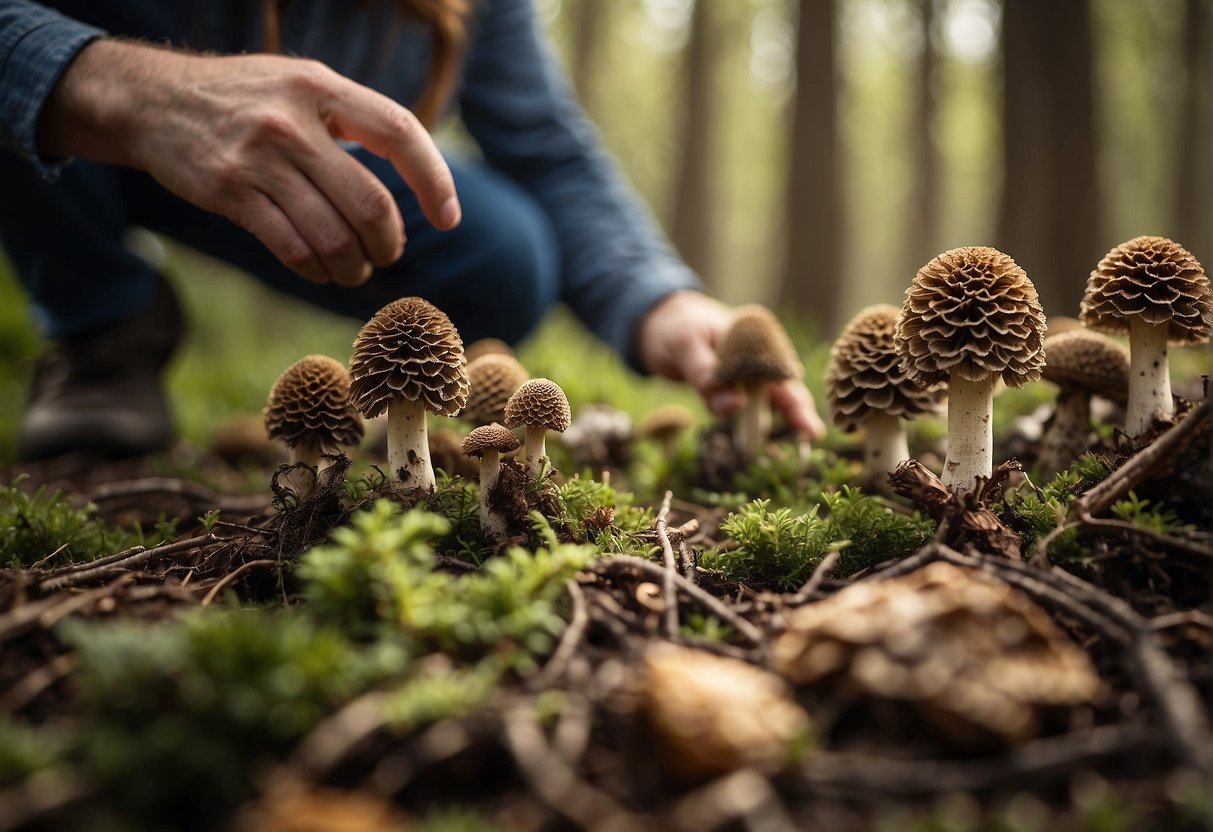
Morel mushroom foraging combines skill and knowledge of the forests to tap into a seasonal supply that can fluctuate yearly. Your success in foraging for morels is influenced by an understanding of their growth patterns and regional availability.
Foraging Practices
When you set out to forage for morels, being equipped with the right mushroom foraging tools is crucial. Typical gear includes a sturdy basket or mesh bag to allow spores to disperse, a small knife, and perhaps even a mushroom foraging course under your belt to better identify your quarry. Foragers often keep their spots secret, as these fungi are as coveted as they are elusive.
Seasonality and Growth Rates
Fresh morel mushrooms have a narrow seasonal availability, usually sprouting in the springtime when the soil warms up. Weather conditions, like a wet spring followed by warm days, can greatly enhance their abundance. Growth rates can vary widely, creating a rush to harvest once they make their brief appearance.
Rarity and Regional Findings
In regions like the West Coast and Virginia, you might find foragers combing through wooded areas with a keen eye for the cone-shaped treasures. Morels’ rarity is notorious, and even seasoned foragers relish the nuances of each year’s hunt. The intertwining factors of terrain, weather, and foraging pressure mean regions can dramatically differ in morel supply and market dynamics, with some years being bountiful and others sparse.
Market Dynamics and Pricing
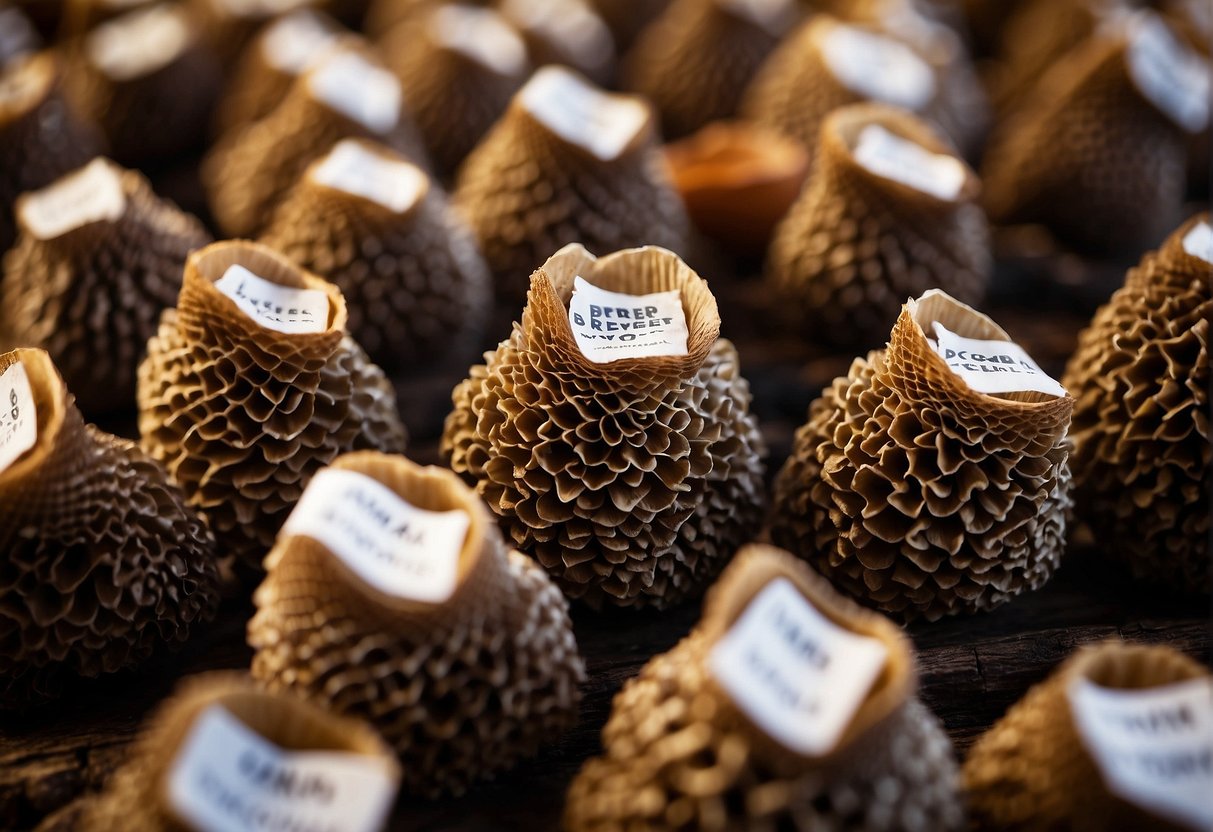
When looking to purchase morels, understanding the intricacies of market dynamics and pricing is crucial. Prices are not static and can fluctuate based on a number of factors that influence the cost per pound.
Supply and Demand Factors
The availability of morel mushrooms often sees significant variation annually, severely impacting supply. As morels are wild fungi that require specific conditions to flourish, their natural scarcity inflates their value. The rarity of these mushrooms often drives up the market price, which can see considerable hikes especially when the demand from gourmet chefs and enthusiasts peaks during the spring season. At times, you might pay a high price tag at your local farmer’s market or specialty food store due to the simple economics of their limited availability.
Purchasing Channels
You’ve got a range of options when it comes to where you can buy morels. The market spans from local collectors selling directly to consumers, higher-priced retail environments like Whole Foods, to online marketplaces such as Amazon. Restaurants are also big buyers of morels, favoring their freshness, which can influence the expensive price you pay as a consumer due to competition.
Cost Considerations
The price of morels covers more than just the cost of the mushrooms themselves. The labor involved in foraging these elusive fungi is substantial, which adds to the pricing. After all, it’s not every day that someone can find these treasures hiding in the forest. Plus, the shipping and transportation factors contribute to the final price you’ll encounter at the check-out. If you live far from the source, expect the expense to reflect the logistical challenge of getting morels from the woods to your plate.
Storing, Preparing, and Cooking Morels
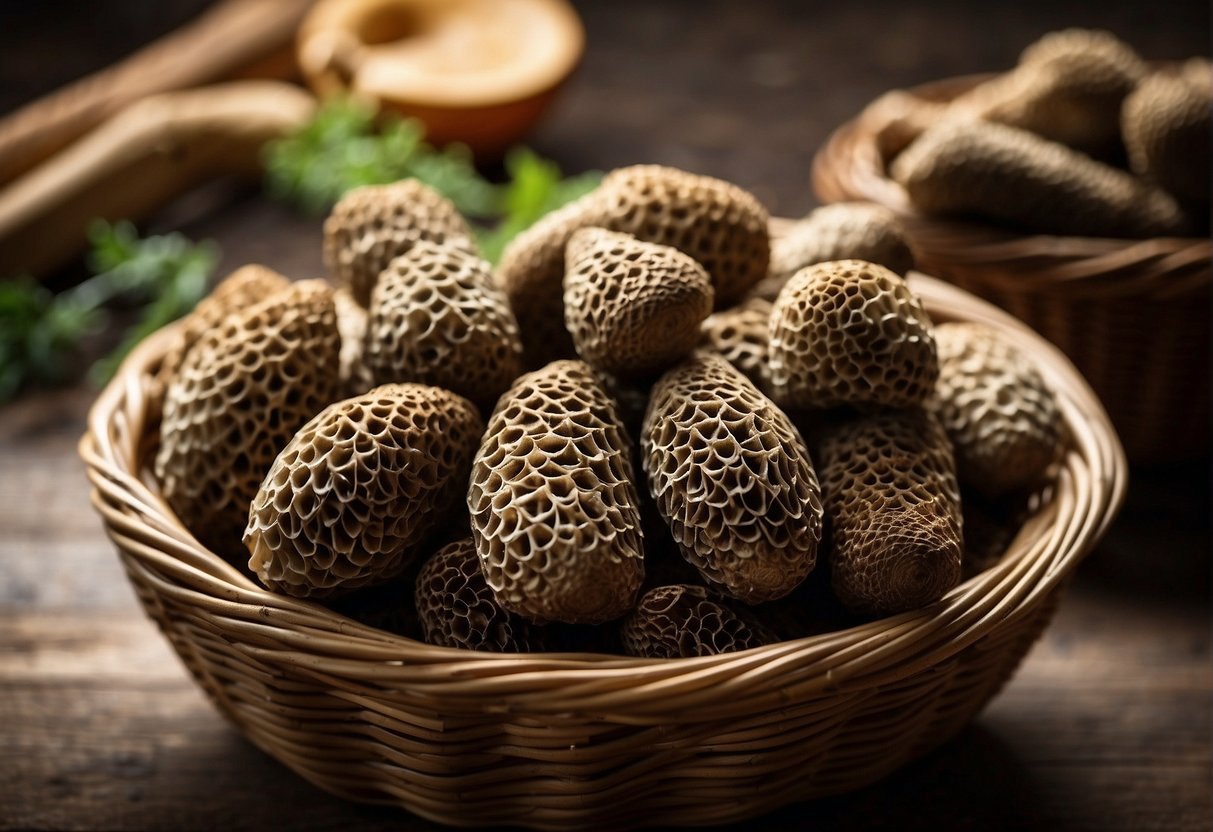
Morels are treasured for their unique flavor, offering earthy and nutty notes that elevate any dish to a culinary delight. Proper storage and preparation are crucial to preserving their delicate texture and taste.
Preservation Techniques
To maintain the integrity of morels’ texture and flavor, keep them in a paper bag in the refrigerator to regulate moisture levels. For long-term storage, morels can be frozen. First, clean them, pat dry, and then place them in an airtight container before freezing; this can preserve their quality for several months. Dried morels are another popular option, lasting up to a year when stored in a cool, dark place.
Culinary Applications
Morels are a staple in the culinary world, prized by chefs and food enthusiasts alike. Their earthy flavor and unique texture make them ideal for sauces, soups, and stews. Try sautéing morels to bring out their umami flavor which pairs wonderfully with copper-rich ingredients like meats or with delicacies to enhance the overall taste. They can easily transform an ordinary meal into an extraordinary dining experience.
Reconstitution and Preparation Tips
When working with dried morels, you’ll need to reconstitute them first. Soak in warm water until they’re plump, usually about 20-30 minutes, to restore their earthy flavor and unique texture. You can then use them as you would fresh morels, keeping in mind that they’ve absorbed some water, so adjust your cooking times accordingly. This technique allows dried morels to substitute for fresh ones in any recipe, such as when compared to other mushrooms like porcini, shiitake, or oyster.

